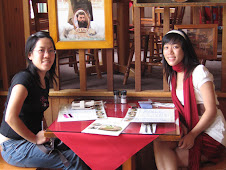


i paid $3.80 a kilo for the langsat fruit at sheng siong supermarket and$5.00 a kilo at a fruit stall in geylang. however, if you know where to go, you can find this fruit growing in abundance by the roadside in a certain part of singapore. whether it is unlawful to pick them, i am not so sure.
the duku and langsat are closely related members of the same botanical family (meliaceae), and are very similar fruits.
the duku is normally larger than the langsat. they grow in clusters with a leathery skin. the duku has a golden brown colour; the langsat is more of a cream color. (brown langsats are over-ripe.) gentle pressure on the top (stem end) of the fruit will cause the skin to split, making the fruit easy to peel. the skin of the langsat contains a sticky latex which is annoying but not harmful. the duku does not have this latex sap, and is considered a superior fruit for that reason.
the interior of each fruit contains 5 or 6 segments which are very much like the segments of a small grapefruit. the flesh is sweet and juicy, and tastes much like a very mild, sweet, grapefruit. some segments may contain small, bitter seeds. do not bite into them. there is no harm if you swallow the small seeds.
there is so much on some of these trees that you can easily harvest ten kilos of the fruit at one go. the smaller sized fruit tends to be sweeter and some of them are seedless.
when we were young, we used segments of the skin of the duku as ammunitions to shoot at each other. we would have a rubber band between our thumb and forefinger. placing the segment of the duku skin against the rubber band, we would pull it towards us before releasing it at our target. if shot at close range, you could end up with a stinging pain.



































